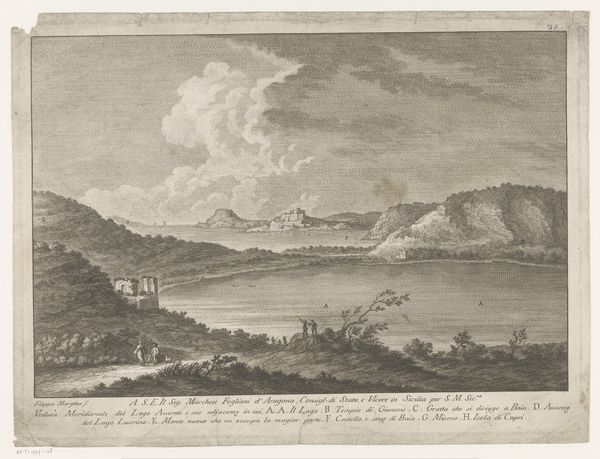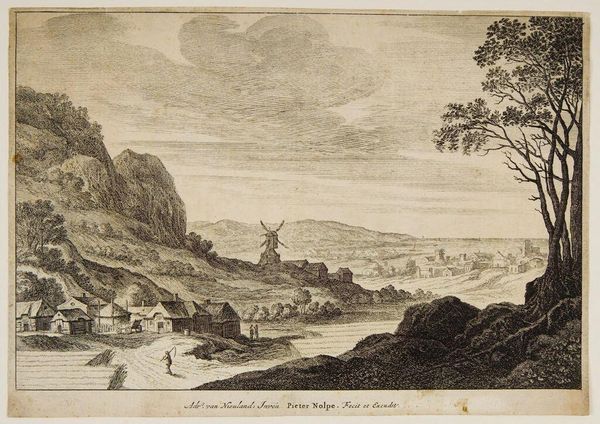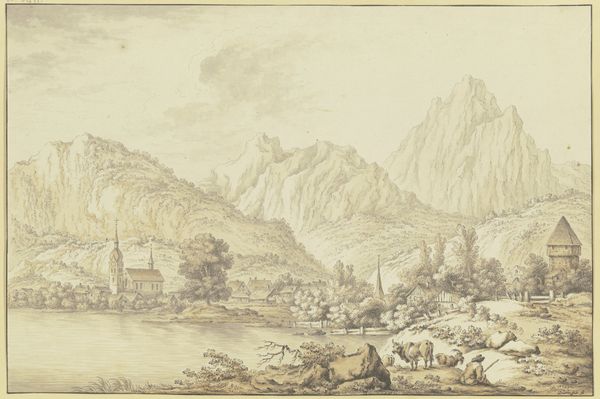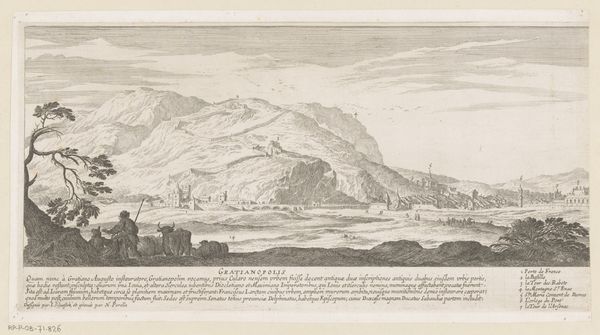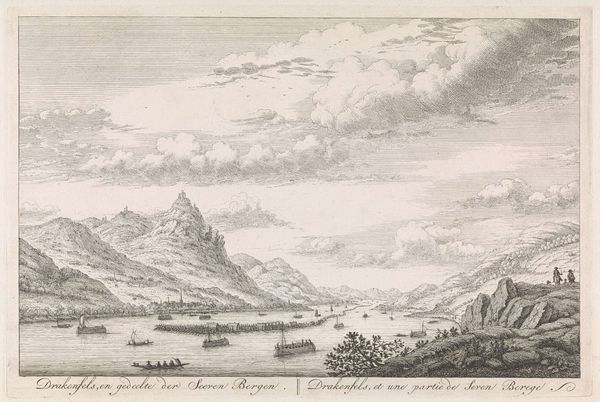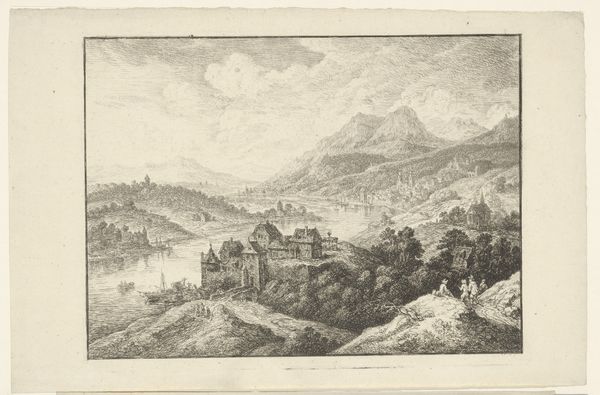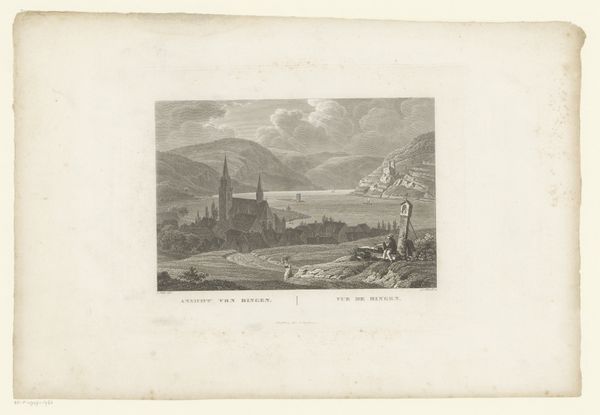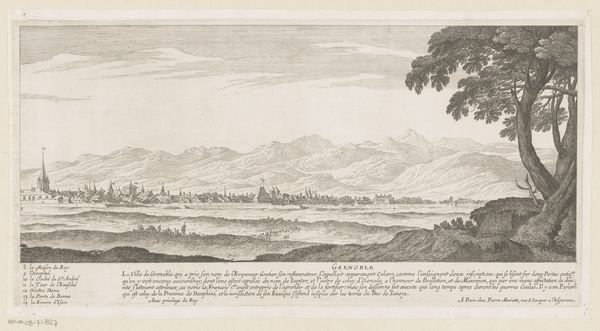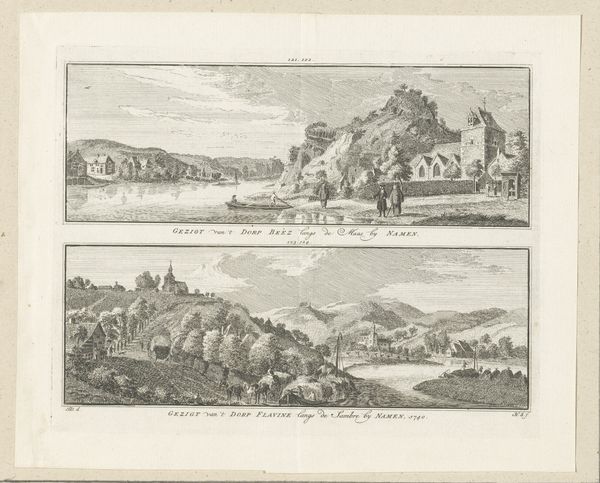
print, engraving
#
neoclacissism
#
lake
# print
#
old engraving style
#
landscape
#
cityscape
#
academic-art
#
engraving
Dimensions: height 242 mm, width 361 mm
Copyright: Rijks Museum: Open Domain
Editor: So this is *View of Lake Geneva*, an engraving by Louis Joseph Masquelier, created sometime between 1751 and 1811. It’s got this wonderfully serene feeling, almost like a postcard from a bygone era. What do you see in this piece, considering its history? Curator: Immediately, I'm struck by the way Masquelier positions this idyllic landscape. We need to consider this work within the burgeoning Neoclassical movement, which itself was a reaction *against* the aristocracy, towards democratic ideals. This pursuit of harmony and order is palpable, but, let's ask, for whom is this Geneva a haven? What voices are excluded from this picturesque scene? Editor: That's a good point! It does feel kind of sanitized. Curator: Exactly. We might consider how landscape art historically functioned as a form of visual rhetoric, often employed to promote specific political and social agendas. Whose land are we *not* seeing represented fairly in this so-called perfect picture? Does this reinforce power structures or challenge them? Editor: So it’s less about just pretty scenery and more about the story it *doesn't* tell, or perhaps the story it actively obscures? Curator: Precisely. We see the figures in the foreground, seemingly admiring the view, perhaps meant to represent an idealized citizenry, yet there’s an undeniable romanticization of the pastoral. To me, it feels like we must actively question whose perspectives are missing. The piece becomes less about what’s depicted, and more about understanding that the period’s pursuit of "perfection" always leaves someone out. Editor: Wow, that gives me a lot to think about! It’s made me reconsider the intent behind what appears to be a very traditional, classical scene. Curator: Indeed. Let us look beneath the surface! Engaging with these absences can teach us much more about the socio-political climate that fostered the artwork than mere description ever could.
Comments
No comments
Be the first to comment and join the conversation on the ultimate creative platform.


